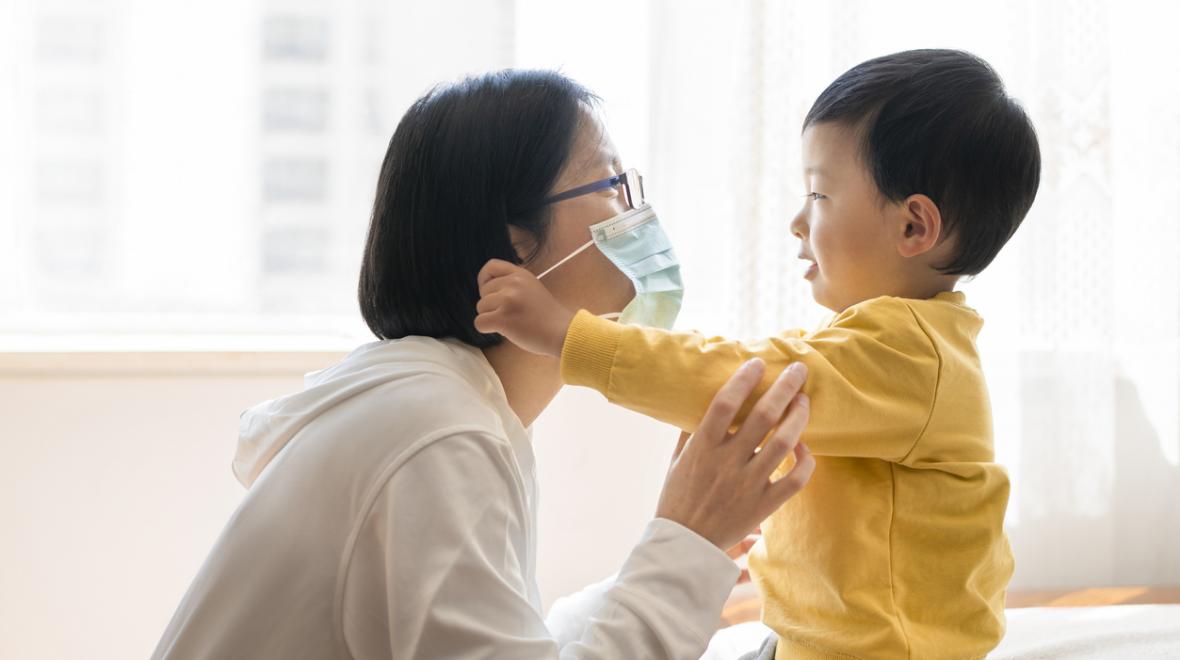
My daughter turned 6 the week after schools closed on March 22, when many things, including her birthday party and her well-child visit at our pediatrician, were canceled. At the time of cancellation, the office called to say they were only doing newborn well checks until further notice.
Mid-April came staggering in with the daffodils and more depressing news, and the doctor’s office called me again. They wanted her to come in for her well-visit. “Is she due for vaccines?” I asked. No. But she still needed to come in, they said, and scheduled me for later that week.
The way this office decided to handle well visits, according to what was available to them and the CDC guidelines, was to take their two locations and designate one for sick visits and one for well. The well location was not our usual office, but it was not very far away. To minimize time spent in the office, we had a telehealth Zoom call for about 15 minutes that morning. My daughter delighted in showing her doctor her art projects and funniest faces. He acknowledged her anxiety about coming to a new office and having to wear a mask. Her grandmother made us cute patterned fabric masks, and she liked her design, but got scared when she saw her own reflection while wearing it.
When it came time to go, she was excited. We drove with the windows down until the freeway and both remarked on the diversity of smells out in the real world. In our house, there were fewer olfactory options available — mostly the smells from the dirt in the yard or her brother’s poopy diapers.
We parked and put on our masks. This was our first time in public since schools closed. It had been five weeks. Immediately, both our pairs of glasses fogged up. I tried to find a way to position them so we could see and still have the mask covering our noses, but to no avail. I put our glasses in my purse and, squinting, we entered the building.
There was a security guard at the front desk wearing a dark cloth mask. My daughter said he scared her because the mask was not patterned like ours. I told her not to touch anything and we rode the escalator up to the office. I felt unstable, like my vision was slightly obscured by the mask. I felt like I couldn’t see below me and pulled my sleeve over my hand to steady myself on the escalator. It was quite hard to get a full breath through the mask.
Outside the pediatrician’s office on the third floor, a nurse with a laptop checked our names. She took both our temperatures and told us to stand on the pieces of paper in the lobby and not sit in the chairs. The papers had the practice’s logo printed on them, a bright green leaf, and I sent my daughter on a mission to jump on all the leaves and touch nothing else while I checked in and verified insurance with the woman at the check-in desk.
They called us back quickly. I saw no other patients during our entire time in the building. In the exam room, the nurse took my daughter’s blood pressure and pulse. She measured her height and weight and handed me a print-out with the stats. We waited for our doctor. I realized I forgot to bring waiting materials. No tablet with games, no books. Usually, there are books for kids to read while they wait. No more. We played I Spy. I found myself feeling light-headed. My ears were throbbing from wearing the elastic mask hooks and I was sweating profusely. I didn’t want to touch any of the surfaces, but I decided to sit down while we waited. I lifted my mask and took a deep breath and then started to picture micro-droplets of germs flying through the small exam room, infecting me from the last patient. I remained calm.
“I spy with my little eye something orange,” I said. It was the sticker on a biohazard container. She guessed several other orange things before the doctor finally came in. He didn’t have his glasses on either and, when she mentioned it, he told her he’d worn contacts so his glasses didn’t fog up. She squinted at him myopically as he did a quick physical and checked her out. She tensed up when he first approached her with the mask and we promised her nothing would hurt. Her little shoulders relaxed and her eyes softened. She panicked again slightly, her breath catching in her throat, when he asked her to remove her mask to check her throat, but he reassured her.
I wanted to get out of there. I was so sweaty, everything was blurry without my glasses and I was struggling to take a deep breath. I’d read the article about when to make your kid wear a mask and when to forgo and it said it’s not worth it for the kid to wear the mask if they keep touching it. That’s exactly what I was doing. I was tugging at my ears, lifting it off my nose or chin for a quick second of fresh air, and generally messing with it. My daughter was doing fine. I was the one who couldn’t be trusted. I’d been excited to get out of the house! I’d put on my best loungewear and had brushed my hair AND teeth. Now, I couldn’t wait to get back to my safe house.
We left. She touched two surfaces on the way out of the building but there was a giant bottle of hand sanitizer by the front door. When we got to the car, we ripped off our masks and shoved them in my purse. Fresh, glorious air. I buckled her in and we went back home straight away.
Doctors are the only safe place where kids can get checked on by people not in their immediate families.
She acted weird for the rest of the day. It had been over-stimulating for her. She was angry, dismissive, rude and hyperactive. I felt assaulted. My senses had been overwhelmed. I didn’t want to go back to the real world if it meant wearing the mask again. I couldn’t read people’s facial expressions, I could barely see without my glasses, and I didn’t like it! Why did they make me go in? We didn’t need to do that?! She’s fine, healthy and up to date on shots!
The next day, psychically anticipating my rage, the pediatrician’s office posted an article on their Facebook page with guidelines from the American Academy of Pediatrics about why kids should still do well-child visits. Besides the staggering fact that vaccinations have gone down by 50 percent in some places, it is important to come in even if your child is otherwise well so they can do screenings and check out ears, eyes, tummies and mental health.
The doctor did ask me if we were “doing okay.” After my joke that we were fine “considering,” he, in all seriousness, asked again. My husband is a dentist and has had his office closed to non-emergent cases for over a month. He and his staff are taking unemployment. Like us, our pediatrician’s office was waiting on the payroll loan to determine staff layoffs. If they didn’t get it, they would have to lay off several staff members. He had told me all the doctors took 50 percent pay cuts recently. You may roll your eyes that a doctor complained about pay cuts, that 50 percent of a doctor’s salary is still more money than most people bring home, but the big picture can be more complicated than that. My husband’s business is new and getting its bearings, he still pays hefty student loans and he is the primary earner in our family of four. I can’t say for certain that we will recover financially from this experience. I cannot speak for the pediatricians in our doctor’s practice either.
So, yes, to some extent, keeping well visits is about making sure doctors keep their jobs. It’s definitely about making sure we prevent diseases that vaccines cover while we fight one that does not yet have a vaccine. More than anything, for my family, the well visit was a chance for our doctor to make sure we were okay. Doctors are trained to see signs of abuse and neglect. The kids aren’t going to school, of course, so teachers, who are also mandatory reporters, can no longer check on kids.
Doctors can also detect hard-to-spot medical conditions, and can point families in the direction of resources if they suddenly find themselves in financial hardship. Doctors are the only safe place where kids can get checked on by people not in their immediate families. We’re banging pots and pans for the frontline workers, but the medical professionals we’ve sidelined are making sure the vulnerable populations and suddenly vulnerable populations in our society don’t fall through the cracks during this crisis and aren’t worse off when we go back to “normal.” They deserve our support, too, and are here to support us.
I am thankful for my pediatrician.











